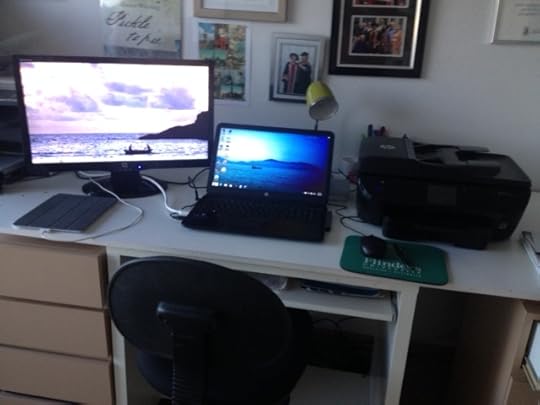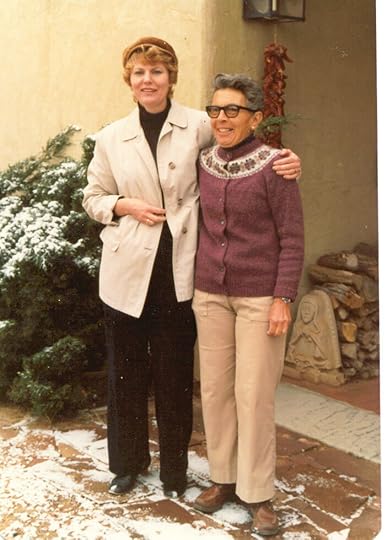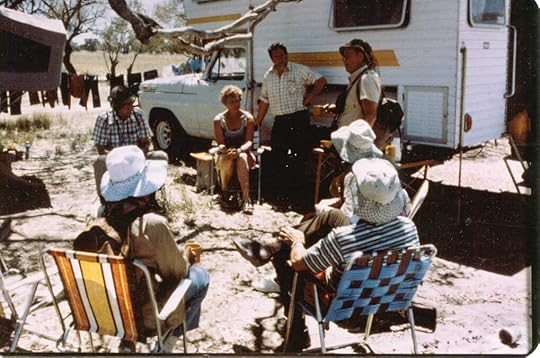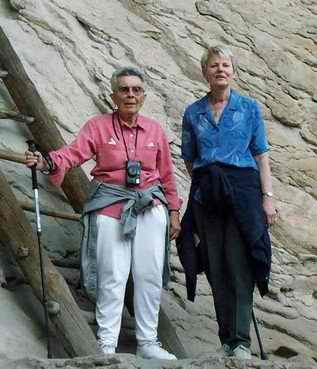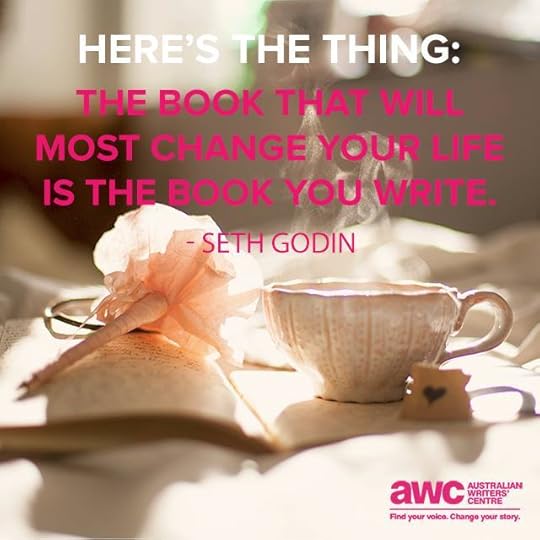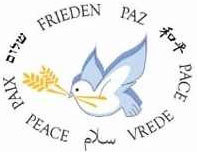Glenice Whitting's Blog
July 4, 2022
It’s time
It’s now the 5th of July. It’s time to get back to this blog after months of procrastination. After Coronavirus it is hard to pick up life again.
The 3rd book, called Dyed Pretty, [Working title] after some more research is ready for revision. After that it needs to be edited. I’ll use Cindy Vallar again for that as, even though in the United States of America, she is available via email. She did a great job editing my last two books and I look forward to her comments.
I zoom with my writing group every Sunday night (Wendy Dunn and Nerina Jones) and encourage Rebecka from Godfrey Street Community House in Bentleigh’s Memoir Writing Group by zooming with her on a Monday.
What time is it there? published by Wendy Dunn at Posey Quill Publishing is going well. Especially on Kindle. You’ll find the link here
I’ll look forward to reading any comments.
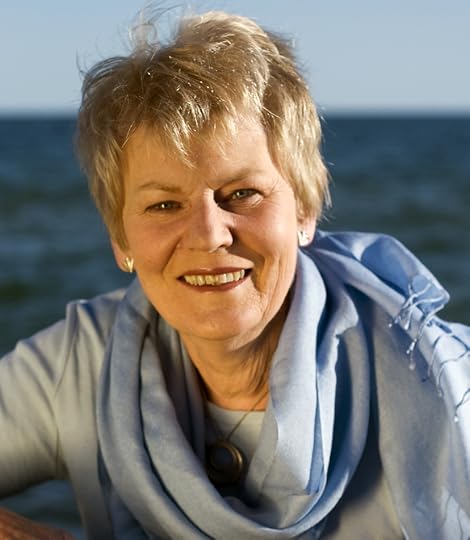 Glenice Whitting
Glenice Whitting
December 25, 2021
Wishing you a Merry Christmas
Happy Christmas and may 2022 be kind to everyone and filled with love, peace and good health.
I am sure most of us are glad this year is behind us. so let’s hope 2022 is a better year for all of us. Despite lockdowns this year seems to have flown. Maybe because of falls and recovery and husbands but most of all I have been busy writing the next book, with a working title of ‘Dyed Pretty’. She was always going to leave a pretty corpse.
We have our own writing group every Monday, via Zoom, and I find that keeps me motivated.. Another motivation that keeps me writing is the Memoir Writing Group. This group has just closed for Christmas at Godfrey street Community House in Bentleigh, but they are taking bookings for Memoir writing next year.
For those of you who don’t celebrate Christmas I wish you joyous festivities
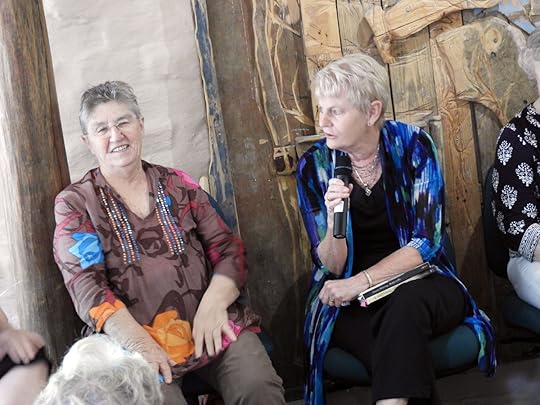
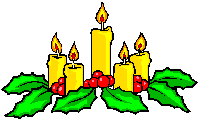
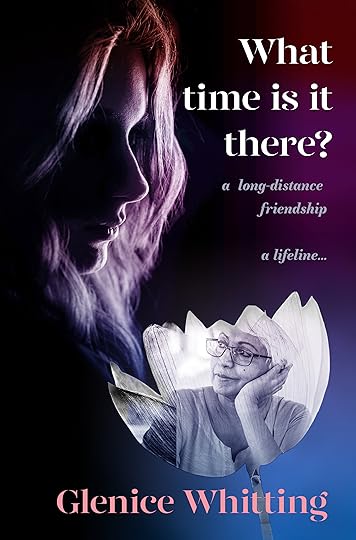
February 27, 2021
May 2021 be kind to you and keep on writing.
I hope you will be inspired to write your stories.
I find that during corona-virus lockdown that I lacked motivation and couldn’t write a thing. Once everything got back to some semblance of order I find I’m loving writing again.
Once more I keep a journal and my third novel is coming along nicely. Tomorrow, two pages are being workshopped by my writing group. We zoom these days.
I’m also teaching ‘Memoir/Life Writing’ at Godfrey Street Community House. I’ve always enjoyed that class, especially when we write our splurges. The class members of our group continue their stories. Guess what comes into my mind and what do you think I’m writing about? Dyed Pretty, of course (my third novel). I know I’ll finish it one day.
Writing creates it’s own momentum. Enjoy the challenge.
December 31, 2020
May 2021 be Kind to You
Happy New Year to you all
What an awful year to have behind us. We have been in total isolation for months now and I miss my family and friends.
However, we had the best Christmas ever with both boys involved and Jason and Karen, plus the grandchildren Tahlia and Caxton making it here to Victoria by driving all the way from Queensland. Corona-virus certainly put a spanner in the works as they had to skip staying in Sydney.
But I just love starting a new year with all my hopes and dreams intact. 2021 is a new start. I have so many new year resolutions I can’t help wondering if I’ll keep them all. I’ll do my best, but there are no guarantees. Just stay connected.
I just want to wish all my friends a very Happy New Year
Hopefully I’ll catch up with you in this brand New Year of 2021.
November 15, 2020
Three reincarnations of my story
The story began as the artefact for my PhD at Swinburne University. I used this story (working title Hen’s Lay, People Lie) to learn the craft of writing a novel.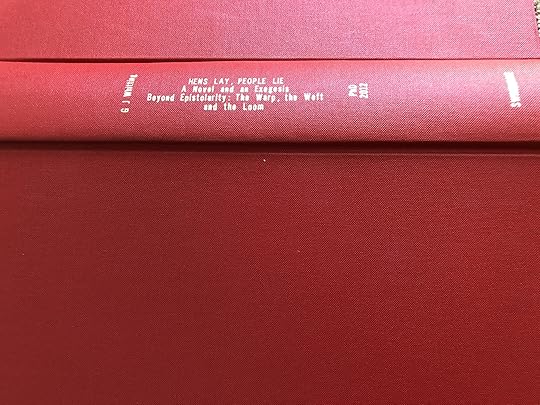
It had embedded dialogue, where the following action and formatting, instead of dialogue marks, revealed who was speaking. I also had three voices. The older American woman’s voice was first person narration (I). An elderly Diane writing a novel was in second person (you) and a young Diane was in third person narration (she). All interesting, great to learn the craft of writing but it did not make for easy reading. The reader really had to work hard when ploughing through all the technical hurdles to get to the heart of the story.
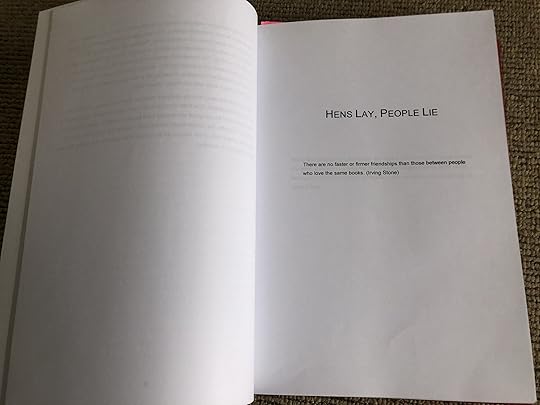
Later, after finishing the PhD, at the recommendation of both judges of the PhD I decided, for the readers sake, to put both Maggie’s voice (older American poet) and Diane (younger Australian mother) into 3rd person narration, to leave out the overarching voice of the older Diane writing the novel, and put back the quotation marks.
Madeglobal Publishing picked it up and did all the work providing a cover, formatting and an English editor who asked, ‘What is a lamington?’ I changed it to ‘home-made cakes’. She also asked, ‘What was a Doona?’ I changed it to ‘Continental Quilt’. I paid Cindy Vallar to check out all the American words for me and also to edit the novel. She did a great job. The working title also changed to Something Missing. It was launched at Swinburne University with Wendy Dunn’s edited and supervised Backstory and Other Terrain.
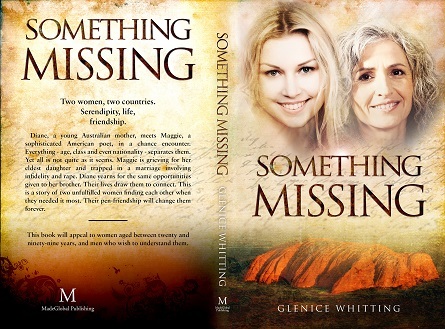
When the opportunity came to self publish I found that I could put in anything that I liked, I decided to leave the two voices 3rd person and to put back the 2nd person voice of the older Diane.
Diane’s Journal: Australia.
Reliving your first meeting and ensuing pen-friendship,
and Maggie’s prompting, planted the thought to write a
longer version of your story. It would be an opportunity to
publish her poetry, limericks and double dactyls. A mark
of respect for someone who was the catalyst for your
writing journey. The thought ‘There is no greater tribute
than to lovingly record a life’ jumps into your mind.
Maybe it could be like 84 Charing Cross Road? You like
the simplicity of the letter format and understanding how
powerful it can be. It could be a small intimate book so
different from the epic proportions of your mother’s story
That covered two world wars and a depression.
This would be an uplifting little tale of two women, who,
in spite of differences in age, culture and countries, formed
a lasting friendship. A common story. True, but one that in
troubled times reinforced the good in human nature.
And underlying all these lofty aims was the thought
that it would give Maggie a lift when she needed it most.
I also knew that I had to pay Luke Harris from workingtype for a new cover for, as I liked to now call it, What time is it there? and David, from Distant Mirror, for formatting. Both forprint on demand and for Amazon Kindle

Dr Wendy Dunn had formed a Publishing Company called Posey Quill for her fascinating Tudor England book, All Manner of Things, plus her other Tudor books and offered to hold my hand and walk me through this new experience. She even gave me an ISBN number and launched the book at the Eltham Library during a Historical Women’s Month on the 14th March 2020 (just before Corona-virus hit Victoria). What would I do without you, Wendy.
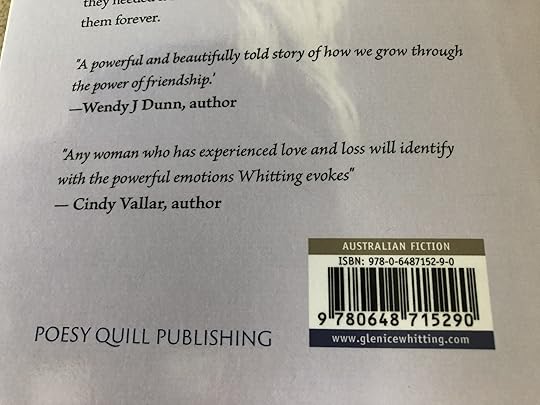
It has been such a joyous ride and I’ve loved every minute, even during lock-down. I won’t say it hasn’t been difficult sometimes but I always knew the sun would shine again.
As my mum used to say, ‘These things are meant to try us’and ‘Life wasn’t meant to be easy’.
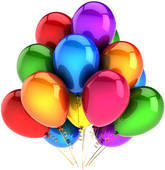
What am I working on now? My third novel. I’ve tentatively called it Dyed Pretty. It’s about a woman who has multiple affairs and lives to tell the tale. I have a rough idea of how it will go and how I want to write it.
Who will publish it is unknown. I have to write it first.
July 11, 2020
Corona-virus and Finalist in the National Indie Excellence Awards USA
During the second wave of the Corona-virus lock-down in Victoria Australia, rather than commiseration and doom and gloom we are looking for some good news to share with family and friends. It came this week in the form of an email sent from America. It read…Congratulations. You are a finalist in the 14th National Indie Excellence Award 2020.
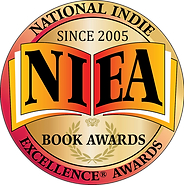
The news could not have come at a better time. I was feeling unmotivated and was definitely slowing down regarding reading and writing. These two things are my motivation and keep me positive and happy. How wonderful to share the news with kindred souls via Facebook and this blog. I also feel happy for Wendy Dunn and Poesy Quill Publishing and all those involved in making What time is it there? such an excellent book, such as Luke Harris (cover design) and David Major /(editing and formatting).
I love it that NIEA have a press release the goes to an array of news and media outlets. We’ll soon see if this affects my sales on Amazon.com
Press Release
The 14th Annual National Indie Excellence® Awards (NIEA) recognize the Winners and Finalists from this year’s robust competition of entries originating from all across the United States of America. The leader and veteran of publishing award contests, The National Indie Excellence® Awards are open to recent English language books in print from self and independent publishers. Judging is now completed for the 14th year of this competition and the results commend a wide range of truly exceptional titles.
The National Indie Excellence® Awards celebrate independent publishing as a strong and vital sector of our industry. Recognizing excellence in all aspects of the final presentation, NIEA champions self-publishers and the independent presses who produce the highest quality books across a spectrum of metrics. Established in 2005, NIEA’s entrants are meticulously judged by experts from various facets of the book industry profession including publishers, writers, editors, and designers.
Winners and Finalists are determined on the basis of superior written matter coupled with excellent presentation in every facet of the final published product. Jurors value the synergy of both content and form as they review entries spanning multiple genres. Sponsorship awards and monetary prize awards are selected from the overall group of Winners and Finalists.
“This year’s entries continue an upward trend in high-quality publishing, even among first time or newer authors. The competition is intense. Indie Excellence® proudly celebrates the talent, dedication and love they put into the book product.”
– Doug Fogelson, President National Indie Excellence® Awards
I feel this has been a combined effort and I’m so happy that many people have been recognised for the great work they have done through very difficult times
May 27, 2020
What stopped this writer from writing?
Life in all its complexities.
The funeral of a friend, procrastination, problems with my beloved computer and the overwhelming urge to clean up years of clutter. All things that everyone experiences at some time or another. However, coming one on top of the other they were enough to make me stumble and forget to nurture myself. I fell off my trusty steed and needed to once again go confidently in the direction of my dreams.
This post is my way of getting back on the horse. To once again feel the wind in my face and the joy of writing.
When I sent Paul a photo of the message on my computer screen the text back read, ‘It doesn’t look good. I’ll call in after work’. It reminded me of years ago when he gave me my first computer. Several years later I rang him saying that the screen was blank etc. and asking what could I do. His reply was, ‘Have you got a shovel?’ ‘Yes’ ‘Well dig a hole and bury it.’ I love his sense of humour. He also managed to save all my documents, files, folders and programs. I now had no excuse not to write.
Being technologically challenged during this corona-virus isolation I needed him again. This time he had to upload Zoom for me so I could meet via Zoom with Wendy Dunn for an author interview for Swinburne Uni on the publication if What time is it there? Also my HNSA group and ‘Live and Local’ at Mornington
I love to write anything and everything, across genres and back again. but most of all I find myself writing autobiographical stories based on life experiences. I guess it is ‘episolary fiction’ and it feels like an old friend.
Recently a friend sent me a lovely card containing reflections by Emily Mathews
‘Like leaves upon a summer breeze, hearts are stirred by memories-those happy-to-remember things. like childhood friends and old porch swings. Family stories told for ages, daydreams tucked between life’s pages. Teardrops spent and laughter shared. Questions asked, adventures dared. Memories stir the heart because there’s joy found in ‘the way it was’.
I believe everyone who wants to tell a story can if they start by writing down one story and then keep going. It sounds simple but it’s far from easy. Maybe you could record stories in an exercise book, or if , like me, you like writing on a computer, keep a simple blog.
What I love is the sheer joy of writing, the intimate relationship between me and the page. I treasure my family and writing friends and through writing I hold communion with my deepest self.
Writing fills my heart, my pages and my life.
I can now get back on the horse and start writing again. No more procrastination and excuses. Corona-virus isolation has meant a change in the way we live. We have more time to write and can use this time to blurb down the bones of a book.
May 18, 2020
Corona virus isolation.
In Coronavirus isolation I tried to understand why I couldn’t write these days.
Was it procrastination, or the death of a close friend and that of my cousin, or something more serious? I certainly had the time and place, but not the ideas. So what was holding me back, stopping me in my tracks. I had just self published Micky and my story and used her title What time is it there? I’d put back, like I always wanted, the overarching voice of Diane writing a novel and had fun doing it. We launched it just before the pandemic started in earnest. So why did I feel unable to write the latest book in progress?
I came across this blog, written years ago, that explains so much. I recently lost a close cousin and can relate so much to this blog and how I felt at that time
OLD BLOG
The dead leave us starving with mouths full of love. (Michaels 1997: 20)
Much of my writing is autobiographically based. Pickle to Pie, although published as a novel was based on my father’s life. This second book is about my thirty-five year pen-friendship with an older American poet. I was three quarters through writing our story when Mickey died. She always, in the early days, had elephants walking across the bottom of every page when she encouraged me to travel, learn and write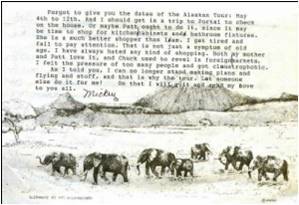
My writer’s journal remained closed; the novel frozen. How to write the unsayable—to write through silence into a safe space? My mediated text, balanced between fact and fiction, meant that half of my writing was in the real world. I was telling another woman’s story as well as my own. I had worked through many writing issues, and told numerous stories of literary and personal goals, but I came full circle when faced with Mickey’s death. At the heart of the novel were two real women. Now, one was lost and I was grieving.
I am a writer and writing is the way I make sense of the world. Therefore I could not understand my inability to write. Mickey’s death was not my first introduction to grief. I had grieved for aunts, uncles and close friends, and the ultimate orphaning loss of both parents. During those difficult times, writing had been my salvation.
I write because then I do not have to speak. I write with the colours of memory. I write because I believe it can create a path in the darkness. So why was I suffering from writer’s block? Because, when Mickey died I was in the middle of writing a fictionalised account of our friendship. I was immersed in the autoethnographic exploration of the memories encompassing both of our lives. This grief was different from any others I had experienced. As Didion reveals in The Year of Magical Thinking (2005) each individual grief is ‘a place none of us know until it happens’ (Didion 2005: 188). T
The voices of others. ‘She was ninety-three years old’. ‘She had a long life’. ‘She didn’t suffer’. ‘You’re still upset?’ ‘Get over it’. ‘Move on’. ‘Mickey who?’ (Journal 4 2010: 126)
Before I could bring myself to write, however, I had to come to terms with my recent loss. Over ninety years old, recently hospitalised, Mickey had refused to eat; she had willed herself to die. I found this out by chance a week after she had died and my creative drive faltered. There was no funeral to attend nor a healing ceremony, just a hole that could not be filled. I gathered black around me and grieved.
I returned to my journal. When I did not want to write, when I was feeling brain-dead, writing about the ordinariness of life without sorting, sifting, editing, connected me with the living and with the dead (Adams 1998: 4). It created a place to be in ordinary conversation with anyone—from myself to my old penfriend. It connected me to Virginia Woolf, Elizabeth Jolley, Margaret Atwood and Margaretta Jolly. I could smell, see, touch and taste the story waiting for its ending. T
The earphones hurt my ears and my fingers tremble as I turn on the tape recorder. Mickey’s highly opinionated deep voice permeates my being. Informal conversations we had in 2002. There are so few. When the tape recorder was on, she rarely wanted to talk, and the best conversations were when I turned it off. For me, it is the sound of her strong, opinionated voice that is important. It triggers deep emotions. I must believe the writing will come to life in her voice. Not mine. Yet woven within the writing is my story. Mickey and I in context with history, revealed via my recollections. (Journal 4 2010: 233)
Life is a tapestry and death leaves a hole. I looked at the empty space and realised I had never willingly allowed any empty spaces in my life. Life had been about hanging on to what you had. Anything I had ever let go had claw marks on it. Yet this empty space was different. With wonder, I began to see it as a creative space, an opportunity to move on through the process of creating (Riggs 2007). It became filled with possibilities. I began to weave the tapestry bigger so the hole was less obvious. Writing the ending to the story allowed me to make visible the size and shape of my grief and through language I could give substance to Mickey.
In May, in water-cooler conversation with another PhD candidate, for the first time I talked about Maggie the character in the novel and thought of her as Maggie, not Mickey. At that point I realised that a huge shift had taken place: a distancing.
There is a break between friend and character. I can write Martha, talk about Martha, think Martha and keep Mickey, friend and mentor safely tucked in my heart. I’m remembering the woman and writing the character (Journal 5 2011: 29)
But was I writing from an idealised memory of Mickey? Had my grief and mourning turned the novel into a representation of somebody perfect and had I ignored imperfections? ‘Hens Lay, People Lie’ was once again in danger of becoming a hymn of praise—until I remembered Mickey’s opinionated honesty. The character Maggie now strides through the pages of the novel warts and all.
A motivating factor in my decision to include Mickey’s death within the novel was the belief that writing about my own experience would not only create a way through grief for me, but would also enable other bereaved writers to ‘witness the experience of reconstructing [their] own map’ (Frank 1997: 17) for writing from mourning. Louise DeSalvo’s writing (1999: 206) reinforced my belief that my story would help others to cope with grief and mourning. It was emotionally challenging to follow Caroline Ellis and the other exponents of emotive autoethnography, and reveal a vulnerable self. Whenever I wavered I thought of Hélène Cixous, Virginia Woolf and Laurel Richardson.
To me my texts are elements of a whole which interweaves my own story, are the seasons, days in the Great Year of my life. (Cixous 1994: xv)
Writing is what I do, in spite of the problems. What I had to reclaim was the sheer joy of writing; the intimate relationship between me and the page. Through this practice I hold communion with my deepest self. I did not want to bury Mickey or to praise her, but ‘…to exalt her exceptional contribution to my own happiness and belief in the worthiness of life itself by the testimony of her own’ (Barthes 2010: 260). Perhaps this is the gift of every daughter—even a proxy one. The blackness of loss and grief woven through the text added depth to the colours already woven through the story.
I have always wanted wings. To fly where I belong, to become who I am…winged and moon-swayed. (Griffiths 2011: 3)
Ultimately I learnt to trust myself and find my own safe space to write from mourning. On my magic carpet I let my imagination soar—to follow Jay Griffiths and fly to the moon, to live in my imagination, to experiment with plot and characters, to swoop and fly and write from multiple stray moons.
Morning sun gilds the topmost leaves of the melaleuca gums. I drag my kayak out onto the lake. Suspended between water and sky, my oar dips into reflected clouds. Between two worlds I find the end to our story. (Journal 5 2012: 233)
If I can sort it out after Mickeys death, I sure can do it now after Dawn and Julie.
I’m back writing again…slowly…slowly. Once more I’m writing autobiographical fiction. This story is about two hairdressers and one has multiple affairs. At the moment the working title is, Dyed Pretty
May 6, 2020
Writing your story: for your family or publication
We write for pleasure, but whose pleasure? Our own? Do we want to keep our stories to ourselves or do we want to share them with others?
During this Coronavirus isolation and lock down, classes no longer run. However, in our Memoir Writing Group at Godfrey Steet Community House in Benleigh Victoria Australia our objective is to produce our own story for our family, or for publication to the wider community. We all have writing projects ‘on the go’ which we shared with each other for help and feedback. When we used to meet, we would also write a 15 minute splurge where we just ‘go for it’ and write whatever comes into our heads. It’s amazing what finds its way to the page. Before we start, we knock that editor critic off our shoulder and tell it to take a holiday. There will be plenty of time later to revise and get things right.
We are not sure when the classes will resume and I miss the people and their stories. (please watch the Godfrey st Community House site on Facebook). I believe that everyone has a story to tell. The memoir writing group assists and encourages us to do so in a safe and friendly environment. Members read and discuss historical and personal events from their own point of view. They may wish to write a memoir for their family, or to publish for wider distribution. I am in awe of the talent in our group and can’t wait to hear the next installment of their work in progress.
We are all passionate about writing and I try to make the class handouts on the craft of writing as relevant to our writing as possible. Later in the year, with their permission I hope to showcase members and their work in progress. I’m sure you too will fall in love with their unique and different stories.

Tell your story
When you have the time during isolation why don’t you grab a pen and start recording your life story in the pages of an exercise book? It’s that simple. Later, your family will love to read the stories you tell from your perspective because it is their history: where they came from, their story.
In the beginning, don’t worry about time lines or order. Just jot things down as they come to you. You can always sort it out later.
The book that most changes your life is the one you write.
May you all remain safe and well during Coronavirus isolation

What time is it there? is my latest book on kindle and Amazon.
It is about my journey from VCE to PhD.
https://read.amazon.com.au/kp/embed?a...
April 24, 2020
ANZAC biscuit recipe
Tomorrow is ANZAC Day ( Australian and New Zealand Army Corps) when, on the 25th April we remember all soldiers who fought for us.
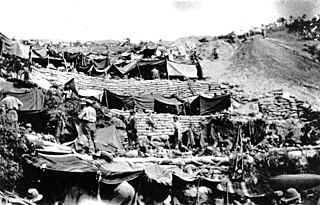
ANZAC Day is one of Australia’s most important national occasions. It marks the anniversary of the first major military action fought by Australian and New Zealand forces during the First World War.
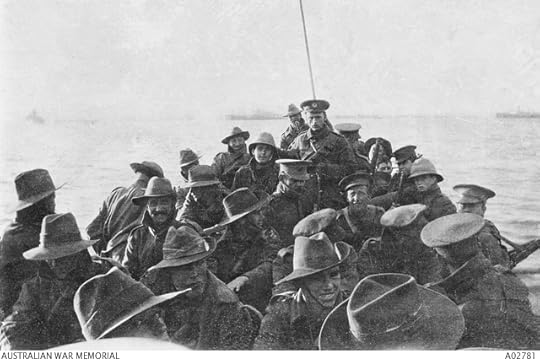
I remember going into Melbourne and standing with many others by the flame of remembrance. I had tears in my eyes as dawn broke over the Shrine of Remembrance and I listened to a lone bugler playing the last post. Unforgettable.
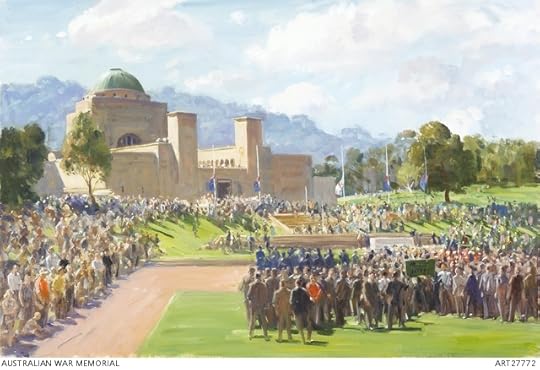
Later I enjoyed a Gunfire breakfast and mingled with old diggers, Vietnam Veterans and many from many other wars and conflicts. I shook their hands to convey in some small way my thanks. .
This year it is different. In this coronavirus lock-down I will be observing social distancing by standing on my own out the front of our house here in Victoria with a lit candle. I will remember them in my own way. Respectful, grateful and so humbled by their achievements.
Lest we forget
I will then come inside and make the Traditional ANZAC biscuits by taking
1 cup of coconut
1 cup of rolled oats
1/2 cup of sugar
3/4 cup plain flour
Melt 1/4 lb butter 2 tabs Golden syrup and add 1 teas carb soda
Mix and roll in small spoonfuls onto a floured baking tray, leaving room for the biscuits to spread
Bake in a moderate oven (approximately 400 degrees) for ten minutes.
(I often bake double quantities. Believe me, they disappear quickly)
Store in an airtight tin immediately they are cold (if you are lucky and have enough left)
How did the dawn service in the city start? It is suggested that the Dawn Service observed on Anzac Day has its origins in a military routine still followed by the Australian Army. The half-light of dawn was one of the times favoured for launching an attack. Soldiers in defensive positions were woken in the dark before dawn, so by the time first light crept across the battlefield they were awake, alert, and manning their weapons; this is still known as the “stand-to”.
Also in 1927 a group of returned men returning at dawn from an Anzac Day function held the night before came upon an elderly woman laying flowers at the Sydney Cenotaph. Joining her in this private remembrance, the men later resolved to institute a dawn service the following year.
I hope you all stay safe and well during this difficult time

